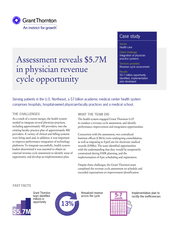Financial planning and analysis - Influencing corporate performance with stellar processes, people, and technology - March 27, 2015
Grant Thornton
Description
123 N. Post Oak Ln.
Houston, TX 77024
US:1-800-776-9676
INTL: +1-713-681-4020
FAX: 713-681-8578
.









